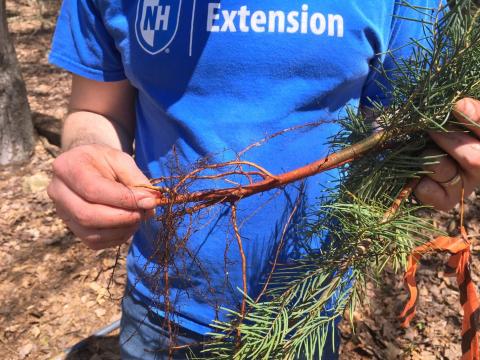Trees Aren’t Tomatoes!

With the arrival of spring, many New Hampshire residents are thinking about planting trees in their yards and communities. When properly planted, a tree can provide benefits for generations. On the other hand, an improperly planted tree may languish and fail to reach its full potential. Even worse, an improperly planted tree might become a nuisance or danger to people or property.
No matter the type of tree to be planted – bare root, containerized, or balled and burlapped – there is one improper planting technique that must be avoided: planting too deeply. As I often say, “trees aren’t tomatoes!” Buried deeply, tomato plants will form roots along their stems. While this planting technique might be beneficial for tomatoes, it is just the opposite for trees. When planted too deeply, tree roots will not develop properly due to lack of oxygen. In addition, moist soil piled against a tree’s stem may lead to issues with both rot and insects.
What is the proper planting depth for a tree? The tree’s root flare (where the trunk starts to bulge) or root collar (where the roots join the main trunk) should be level with, or slightly above, the soil grade. With bare root seedlings, the root collar can often be identified by a slight change in color or swelling on the stem. With proper planting technique, you will give your trees their best chance at getting off to a good start.
New to planting tree seedlings or need a refresher? Check out this quick video to learn how to successfully plant bare root tree seedlings this spring. You can also check out this fact sheet.
If you have questions about planting or caring for trees, contact your Extension County Forester today!
